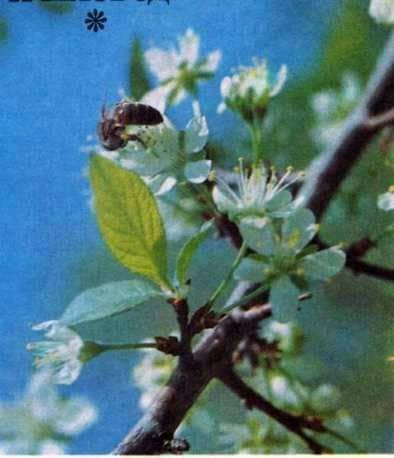
The bees are waiting impatiently for spring. As soon as a warm day (10-12 њ in the shade) comes out, they hurry to fly around in order to get rid of the feces. And when the mother-stepmother is blooming, the bees can not be kept in the hive. The care of a beekeeper in spring is known. It is necessary to clean the debris of hives from debris, cut and insulate the nests. However, in future many beekeepers provide families with the opportunity to decide their own destiny themselves. In my opinion, this is not enough.
Each family is transplanted into a clean hive. I do this at a temperature of 12-14 њ (in the shade), so as not to catch brood. At the same time I specify the number of brood and its condition (whether there are any diseases), whether the uterus has died, whether there is much left after the wintering of the bees and how many frames the nest should be cut, and what the feed reserves are.
If the bees do not fly well, sluggishly creep along the front wall of the hive, here defecating, is an obvious sign of the weakening and illness of the family. In order to save such a family, I am replacing the moldy nest frames with benign ones, giving a warm top dressing with sugar syrup (1 kg of sugar per 1 l of water), adding pollen to it. For the first time, it is enough to give 0.5 liters per family per day. I pour the syrup into the feeding troughs.
Disadvantaged are also families who have lost the uterus for one reason or another. In this case, the bees fly off languidly, bustling around the landing board and the front wall of the hive. It is better to combine an unmodified family with a weak, pre-sprinkling all the bees with sugar syrup.
By the time of flight and inspection in each full-fledged family should be no less than 10-12 kg of honey and perga, necessary for brood rearing.
Bees leave so many frames, how much they densely sit out, the rest I delete. I restrict the nest to the plywood diaphragm, fill the empty cavity with a pillow stuffed with moss or cotton wool. After the spring audit, bee colonies quickly gain strength and successfully work on the main honey collector.
In some families, one can see on the framework of expanded brood (humpbacked), which appears due to a sick or barren uterus.
It also happens that the uterus is not, and the bees themselves lay eggs. In both cases, drones will appear from such brood.
Some beekeepers knowingly leave to spend the winter in families of barren uterus, believing that they will mate with the drones next spring, but this does not happen – the uterus becomes a bloom and it should be replaced. Families with bee-workpipe better to eliminate. For this, all the inhabitants of the nest are shaken from the frame to the grass, the hive is cleaned. Bees, mixing with the specimens of other families, enter their nests.
If two families are united, the uterus, which will be the ancestor, is placed under the mesh, the cap on the cells with honey and brood, from which young bees are already emerging. At the end of the day, a sheet of plywood is put on the board of flies and the bees of the attached family are shoved onto it.
They, aspiring to heat, will gradually pass through the inside of the hive. The next day the uterus is released.
Oviposition of the uterus is stimulated with honey-protein cakes. They are made from one part of the Perga and one part of the honey. Cakes are put on a fine mesh or waxed paper, having made small holes in it, and then placed on top of the frame (without dismantling the nests).
Сушилка для слив. Как почистить улей.
The bee family and its composition